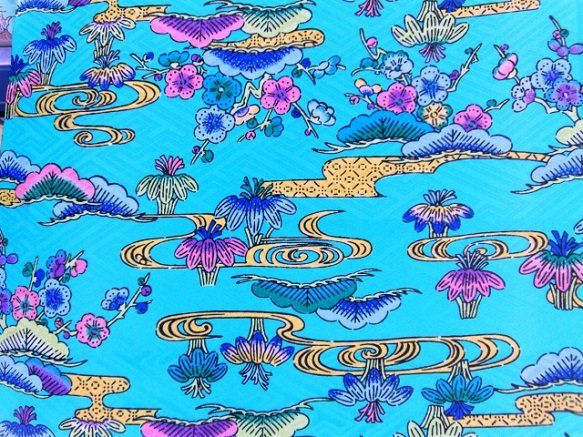-
- USA/Canada 1-800-285-2726
- Australia (02) 8006 4411

Bingata is a type of Okinawa fabric dyed in bright colors and bold patterns. The patterns on bingata usually portray things found in the nature of Okinawa such as flowers, water, and fish. The dyeing techniques used to create bingata were unique to Ryukyu Islands of Okinawa. There are typically ten, fairly laborious steps involved to produce Bingata. The first two steps involve stenciling the design, the third step is to treat large areas for painting, step four begins painting from light to dark colors, step five is a touch-up repainting with lighter colors, step six involves adding details and steaming the cloth to set the colors, step seven is to begin treating the background areas, step eight is to paint the background, step nine is to set the fabric back in the steamer to get the background to set, and then the tenth step is to wash and dry the fabric. Only when each step is meticulously handled by a master artisan can the work be considered authentic Okinawa Bingata. Today, bingata is worn in traditional Ryukyu arts performances, but in the past bingata were only worn by aristocratic social classes.
Looking for authentic Bingata clothing? Japan Deluxe Tours recommends joining our best-selling line of fully-guided small group Quilt Festival Japan Tours in January or Spring to hunt down this unique fabric. You can also opt for an affordable custom vacation package with us for a trip to Okinawa to buy Bingata at the source!
Traditional Okinawa textile to show eternal love
Subtropical Yaeyama island chain covered in jungle and mangrove
Coral reef sea famous for its transparent waters and color coral in Okinawa
Subtropical island with beautifully preserved traditional Ryukyu villages
The first and sole quilt museum established by Mutsuko Yawatagaki
Japanese fabric store in the famous Nippori Textile Town
The Nippori Tomato is a textile store located in the Nippori Textile Town.
Three Stringed Okinawa Instrument